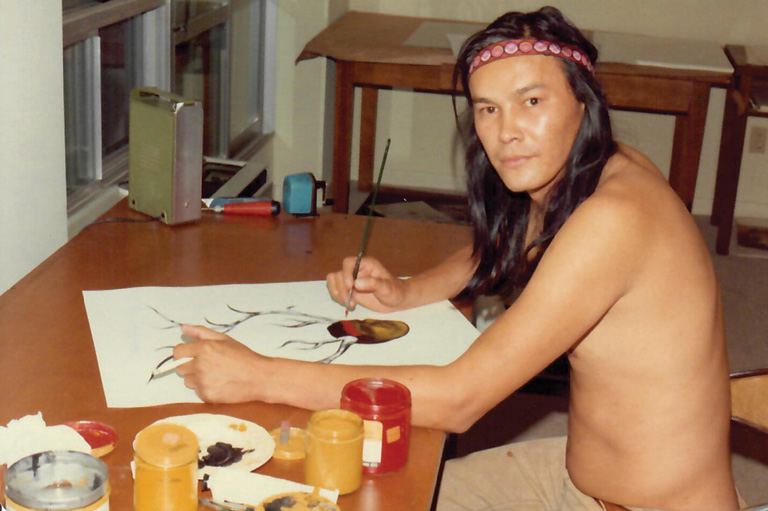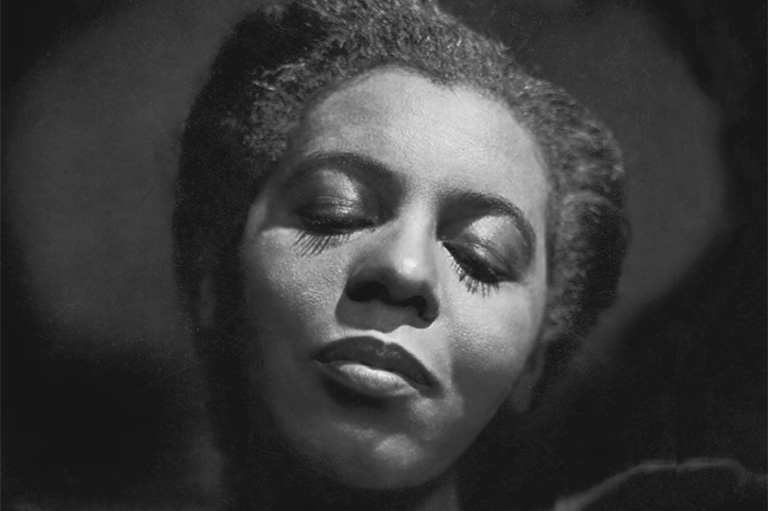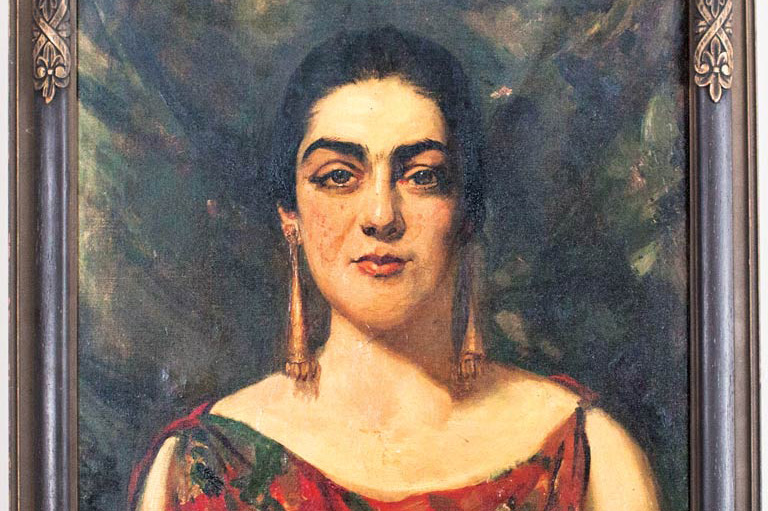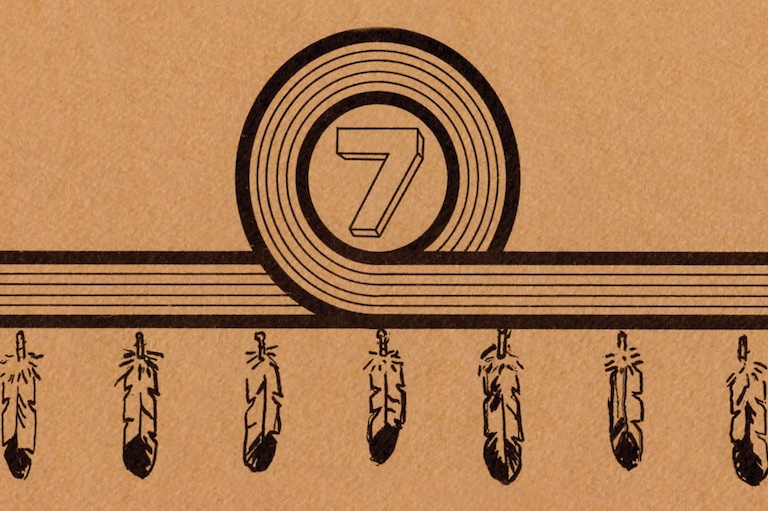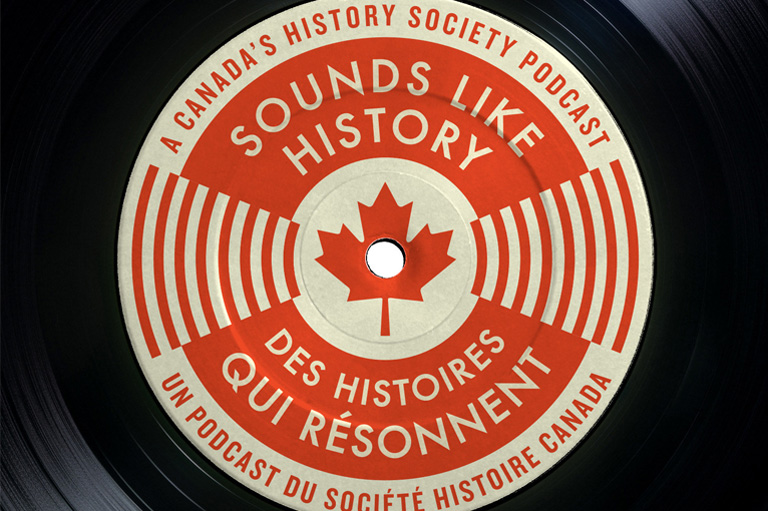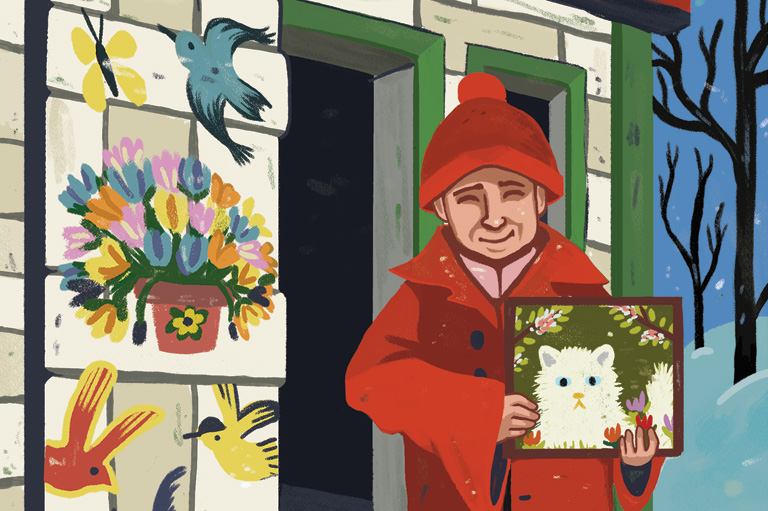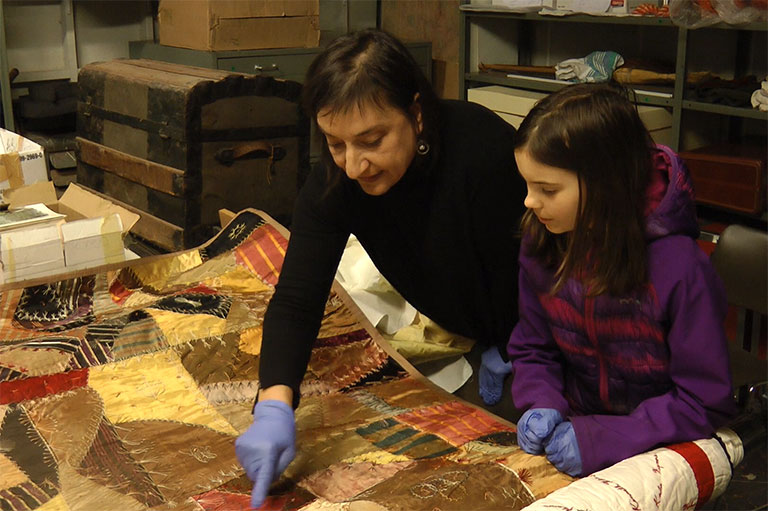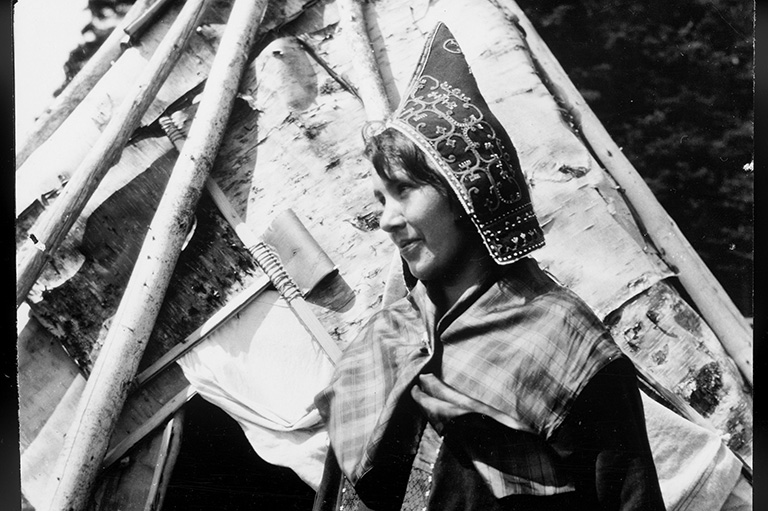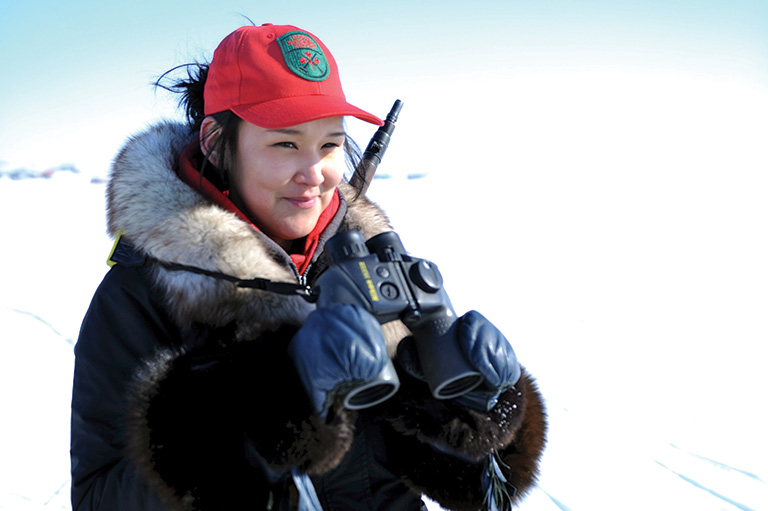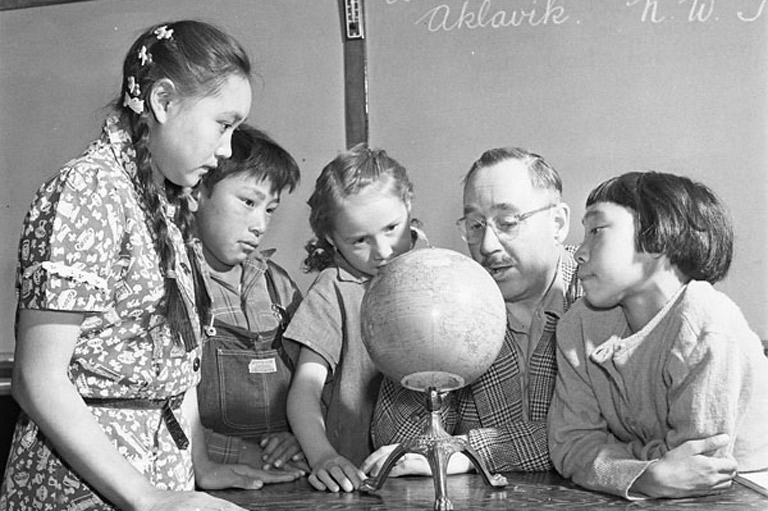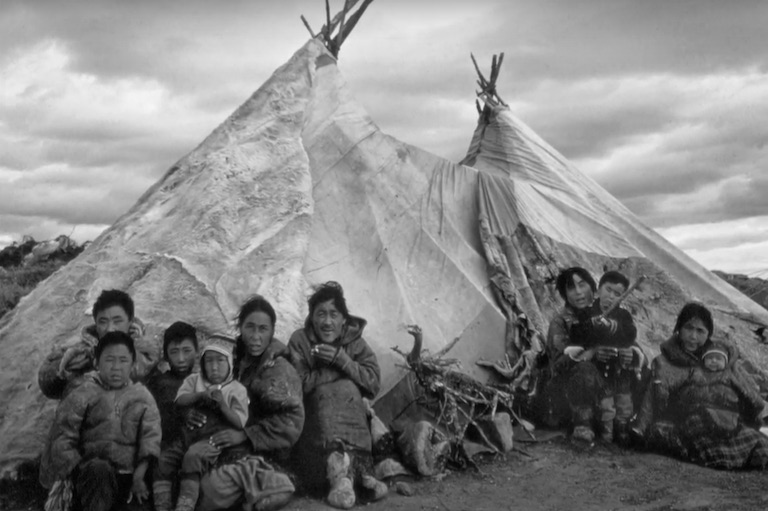Dancing His Own Line
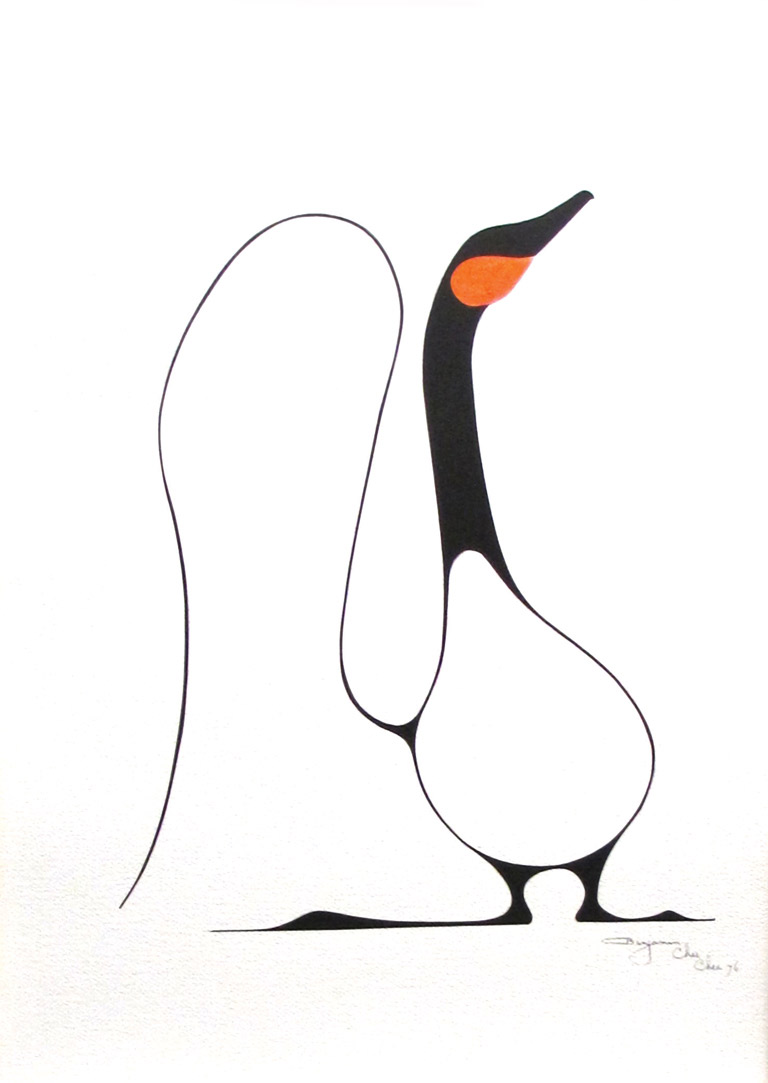
Benjamin Chee Chee had it all. By January 1977, he had achieved the goals he had set for himself. He wanted to be appreciated as an artist, one whose work was instantly recognized. He wanted respect from merchants who would supply his everyday needs and not demand immediate payment. He wanted friends and love, and, above all, he wanted to find his mother; he had lost track of her years before.
In his short career as an artist, Benjamin had risen from painting movie posters to seeing shows of his work mounted from coast to coast in Canada. His paintings were sought after in the United States and in Germany. He enjoyed fine clothes, good wine and food, and his drink of choice was Chivas Regal. He could walk into Chuck Delfino’s men’s shop on Bank Street in Ottawa and walk out with the best suit without ever having asked the price. When he needed a new pair of his favourite Beatle boots, Florsheim Shoes on Sparks Street took care of him. Wallack’s Art Supplies ran a tab when he needed brushes, paint, or his favourite Arches paper. Jimmy’s Tavern and La Gondola restaurant in Ottawa and Café Versailles across the river in Hull, Quebec, provided him with food and drink, knowing he would pay at the end of the month — and he was, after all, a big tipper.
Benjamin had no shortage of friends, some fair-weather and others who genuinely cared about him. Tall and good-looking, he never lacked for female companionship. In the summer of 1976, after a long separation from his mother, he finally located her in a tourist camp in northern Quebec, where she was working. In his typically flamboyant style, he rented a plane and flew in unannounced to surprise her. She was swimming with some children, and Benjamin jumped into the water fully clothed to embrace her. He brought her back to Ottawa with him, his family now complete.
After selling every one of his paintings at a show in Vancouver in January 1977, he returned to Ottawa with plans to relocate to British Columbia with his mother. But first he wanted to have one last show in Ottawa to coincide with his thirty-third birthday on March 26, 1977. He spent February creating new works, designing posters and newspaper ads, and making a list of people to invite, including the prime minister, the Governor General, and the mayor of Ottawa.
Benjamin was on top of the world. Then came the tragic night of March 11. Arrested for creating a disturbance in one of his favourite restaurants, he was handcuffed, taken to the police station, and thrown into a cell for uncooperative prisoners. It was a bare cage.
What went through his mind in the next few minutes that caused him to take his own life? There is no simple answer. Benjamin Chee Chee lived life as a shooting star, briefly lighting up the world around him before running out of energy, his flame prematurely extinguished by tragedy.
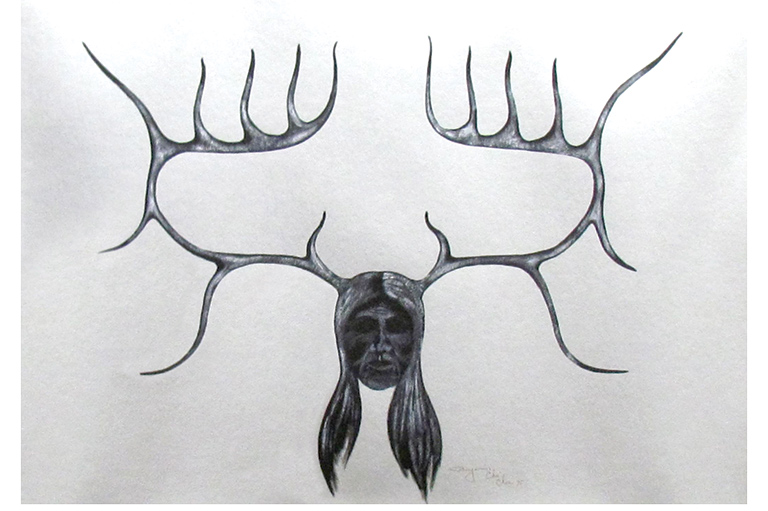
Article continues below...
With 7 uniquely curated newsletters to choose from, we have something for everyone.
Benjamin was born in Temagami, Ontario, a region of lakes and woods northeast of Sudbury. He was an Ojibwa, the only child of Josephine and Angus Chee Chee, who named him Kenneth Thomas. He was born in the house of his mother’s friend, Angele Egwuna Belaney, the first wife of Archie Belaney, the Englishman who had adopted First Nations ways and had become famous as the naturalist Grey Owl. It was Angele who suggested that his parents add the name Benjamin.
His mother, Josephine Marie, grew up in Notre-Dame-du-Nord, Quebec. She moved to Haileybury, Ontario, and then to Temagami, where she met Angus, a tourist guide, trapper, and woodsman whom she married in 1943. Benjamin, who was born in 1944, did not qualify for the designation of status (registered) Indian because his parents were non-status and he was born off-reserve. Although the exclusion haunted him all his life, and even after his death, it also drove him to succeed on his own. As he told the Ottawa Citizen in 1973, “I want to do it by myself. Otherwise they will want to own you — they’ll say ‘I helped you then.’ No one can say that now.”
On March 24, 1945, while Angus was gathering firewood with two other woodsmen from the village, their truck broke through the ice of Lake Temagami, and he drowned. He was buried on Bear Island on Benjamin’s first birthday.
The early tragedy set the pattern for the difficulties Benjamin Chee Chee was to encounter for the rest of his life. After Angus’s death, Josephine had to find paid work, often leaving her young son in the care of others. As he grew older she noticed that he loved to draw and whittle, talents that under different circumstances might have been developed sooner. She also noticed a tendency to wildness in him that, because of her own difficulties with alcohol abuse, she was unable to control. In a CBC Radio interview, Ben spoke candidly about his early life. “The memories of Temagami that I had were good and bad, some ugly .... I used to stay out late at night,” he recalled. “I didn’t start to drink until I was eleven years old .... I stole things. I got into big trouble.”
When he was twelve, Benjamin and some of his friends borrowed a car for a joyride. He was sent to a Roman Catholic reform school, St. Joseph’s Training School for boys, in Alfred, Ontario, more than five hundred kilometres to the southeast. With no stable home to return to, he remained there for more than four years. Hundreds of men have come forward over the years with stories of abuse at the school and have won significant settlements. There have also been many suicides among its victims.
Benjamin said he enjoyed playing hockey at St. Joseph’s, but he would not talk about his time there except to refer to the Christian Brothers, who were in charge, with a derogatory sexual expletive. Friends assumed that his words reflected the abuse he suffered.
Richard McCann, a fellow student at the school, remembered Ben’s repeated efforts to run away. “When they would bring him back they would literally beat him unconscious. First the students would be made to beat him, then the brothers would beat him. He would never say a word, never cry out,” McCann told the Ottawa Citizen in 1990. He added that the Christian Brothers said Benjamin “could take a beating like a man.” Benjamin left the facility an angry young man. The mistreatment he suffered helped to fuel the alcohol addiction he would battle his entire life.
His mother married Ed Roy in 1960 and moved to North Bay, Ontario. On his release from St. Joseph’s, Benjamin came to live with them for a time, tried going to school in Sudbury, and then returned to Temagami to be near his only friend, Hugh McKenzie, whom he thought of as a brother. Benjamin lived with Charlotte Peshabo and her husband on the nearby Bear Island Reserve. Charlotte, who had been present at his birth, cautioned him to avoid the gang of boys from his past; but when they came calling he could not resist. The boys got into mischief, including some “after-hours shopping” at the Hudson’s Bay store, which led to Benjamin’s arrest. Charlotte did not hear from him for years. He felt he had let her down, and he decided to strike out on his own. Over the next few years, he drifted through northern Ontario, trying his hand at a variety of jobs and constantly running afoul of the law, usually for liquor-related offences. During this time, he lost track of his mother.
In 1965 Ben moved to Montreal. Throughout the previous tumultuous years he had continued to display his artistic talents, but he never found the support or the courage to promote himself as an artist. Benjamin busied himself with odd jobs, becoming an exterior painter. He would point proudly to the British pavilion at the Montreal world’s fair, Expo 67, and say he worked on the two-hundred-foot-high scaffolds where no one else would go.
While on the Expo 67 site he undoubtedly would have visited the Indians of Canada pavilion and likely would have made the acquaintance of some of the Indigenous artists who were commissioned to create murals and other artworks for that project. Norval Morrisseau, Alex Janvier, and George Clutesi were among the commissioned artists. Several Indigenous Canadian artists also took part in an international exhibition at Expo 67, something that may have influenced Benjamin’s desire to pursue a career that would use his talents.
He found work with a promotional company doing posters and billboards for movies. He was able to use his talent by illustrating posters for films such as Yellow Submarine, where his love of abstract and surrealist work became apparent. His favourite project was a promotional display for The Graduate in 1968, in which the leading character’s name was Benjamin Braddock. Chee Chee took great pleasure in painting the name “Benjamin” in large letters on a billboard.
In an effort to connect with Montreal’s artistic community, he attended coffee houses and bars frequented by artists and would shyly show them some of his early attempts. Well-known artists Robin and Dorothy Watt encouraged him to devote more time to his art and to try different techniques and media. Dorothy presented him with a set of woodcarving tools as well as a portable easel and painting supplies. Knowing that he had no formal art training, she gave him several books on the subject; one was a very basic book called Fun with Art that helped him to develop his stencilling and spatter-painting techniques. Watt also invited him to work in her studio, where she could coach him as he learned.
A lawyer in Montreal named Fred C. Brown met Benjamin in 1969 and took an interest in him, providing advice and assistance that sparked the artist’s brief career. Brown described Ben as “a brilliant man, logical, inventive, impeccable in his personal habits, meticulous in any work he performed.”
Assuming that Benjamin could benefit from federal grant and assistance programs in Ottawa, Brown sent a letter to Cathy Donnelly Eberts, an employee of what was then the Department of Indian Affairs and Northern Development (DIAND), in 1972. That letter opened the door to Ben’s career as an artist.
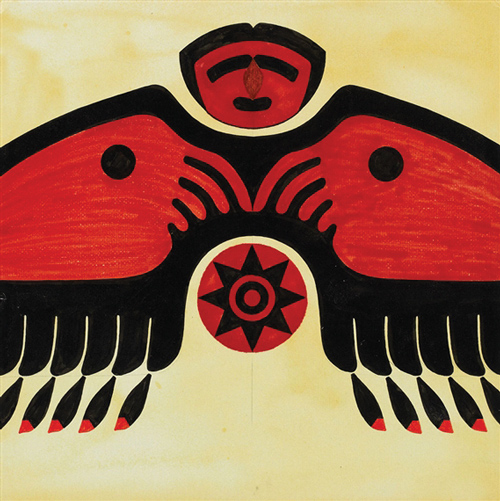
Eberts worked with Six Nations artist Tom Hill in the Cultural Development and Education Branch of DIAND. Benjamin called her to follow up on Brown’s letter, and she decided to visit him in Montreal. He was living in a neat basement apartment with his partner at the time, Lucille L’Orange, who was very supportive and even had him on the wagon. Eberts examined Benjamin’s portfolio of paintings, which demonstrated techniques such as stencil, spatter, stipple, and sponge. His subject matter reflected his First Nations influences; the works bore titles such as Thunderbird Design and Buffalo Design. The geometric patterns that later dominated his abstract period were also evident.
Eberts said some pieces were interesting and some were bad, but she brought back several to display around her office with a note on the back that introduced him to the Ottawa market: “Benjamin Chee Chee is an Ojibway from Temagami, Ontario. He has started to paint seriously quite recently but the results are obviously very good. Due to his financial circumstances Ben has had limited experience with different media and techniques but hopefully with the sale of some of his works will come a little money for art supplies. The work you see here is done with inks and oil base paints. Each one is an original and they are for sale.” She added her office phone number at the end for anyone interested in the work.
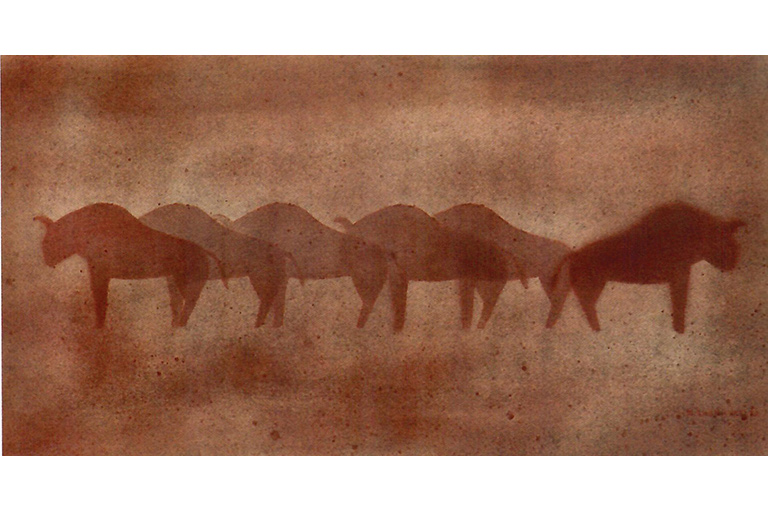
Benjamin’s unfortunate interactions with police continued during his eight years in Montreal, resulting in six stays at the infamous Bordeaux prison. Looking for a new start, he decided to move to Ottawa in 1973. He thought he could receive support and assistance from DIAND but learned that he was not eligible; the department’s policy at the time was that only status Indians qualified for grants and training programs.
Brown contacted Pierre and Marie Gaignery at the Nicholas Art Gallery in Ottawa and arranged for them to see Benjamin’s work. They were immediately taken by his versatility and range and gave him his first exhibition in July 1973. The works were mostly abstract designs but included some paintings of birds and flowers and collages using beads on burlap. Ben attended the opening. Even at twenty-nine years old, he still found it hard to believe that people would actually pay for his work.
Jenny Bergin’s review in the Ottawa Citizen was titled “Talent trebled.” She suggested that viewers might think that, given his range, “two — or even three — people were responsible for Benjamin Chee Chee’s exhibition.” W.Q. Ketchum wrote in the Ottawa Journal, “Though he is largely self-taught, his work is at a professional level.” Tom Hill, who was coordinating the Canadian Indian Art 74 exhibition for the Royal Ontario Museum, bought a painting of a group of bison sheltering in the haze of a dust storm for the DIAND collection. Hill also paid eight hundred dollars for a large painting entitled Migration, which showed the tracks of caribou wandering aimlessly.
Benjamin’s second exhibition was held at the University of Ottawa in December 1973 and contained works similar to his first. Catherine Jutras wrote a detailed article in the Ottawa Citizen entitled “Ojibway artist — selling beads back to the white man.”
“‘I think of myself as an Ojibway artist — a member of the Ojibway nation,’” she quoted him as saying, adding, “he rejects the label ‘Indian artist’ just as he rejected the traditional form and materials of ‘Indian’ art.”
Pierre Gaignery of the Nicholas Art Gallery later observed, “Bennie went his own way and sometimes incorporated himself into a painting. He’d paint a group of animals or birds with a lone image going in the opposite direction, saying, ‘That’s me.’” Benjamin tried several different styles, including portraits and landscapes, but he always returned to his first loves, abstracts and birds. At times he would set up his easel and sketch local scenes along the Rideau Canal or at Rideau Falls near Ottawa’s city hall, but he felt self-conscious with onlookers observing him too closely. He resorted to taking photographs from which he could work in privacy.
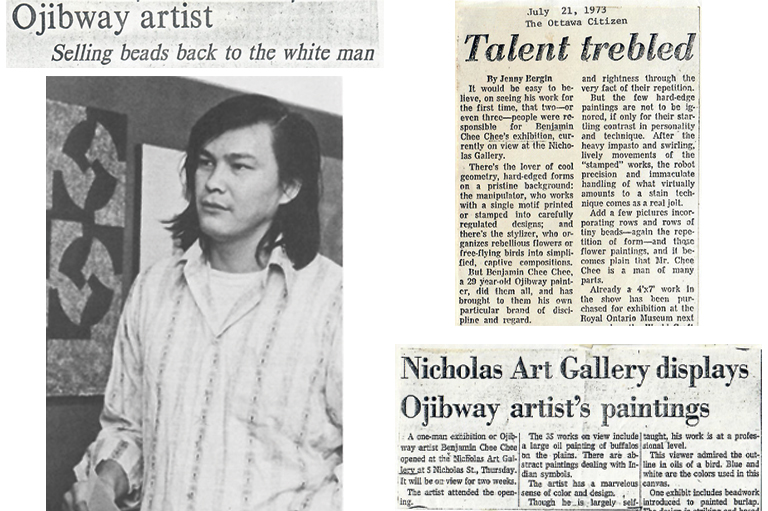
I first encountered Benjamin Chee Chee early in 1974 when I worked at DIAND. I had been intrigued by the images on posters for his exhibition at the University of Ottawa. One day he wandered into my office attempting to sell some paintings. I chose one and asked the price. With a mischievous gleam in his eye, he responded, “How much money do you have?” I counted out all the money I had with me, which totalled forty dollars. He said, “Forty dollars,” and then reconsidered, saying he didn’t want to leave me with nothing. He gave me a dollar back. We formed an instant friendship that day.
Over the next few years he dropped by my office many times to visit or called me when he needed help, which was often. The help ranged from advancing him money for food and art supplies to helping him move when he wore out another landlord’s patience, finding him legal representation when he crossed the line, or just listening when he needed to talk.
My office was on the messy side, and one day he brought me a flat rock from the river that he had painted and signed. He told me that I now had the only Chee Chee paperweight in the world. Another time, as we were walking down the street, he picked up a piece of metal strapping and twisted it while we walked, only to discard it. I picked it up and asked him why he threw it away. He said, “It’s just a piece of junk.” I said, “No, Ben; it’s art.” He had created a perfect image of one of his “Benjie birds.”
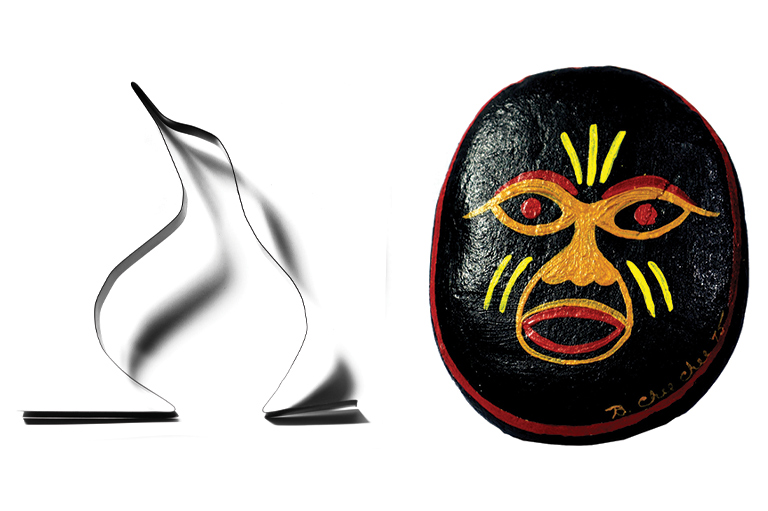
Wishing to help him reach a wider audience, I took a selection of his work to galleries in Kingston, Toronto, Hamilton, and Waterloo in Ontario. They were all interested in taking some pieces on consignment; by the time I got home they were calling for more.
Always appreciative of those who helped him, Benjamin spoke with great reverence about people like Dorothy Watt, Fred Brown, and Cathy Donnelly Eberts, and he considered Pierre and Marie Gaignery his second family. While he attracted companionship in bars as long as he had money, there were times when he found himself alone and reached out for support. One Christmas Day he called me. I invited him over, but, while he said he did not want to impose on my family day, he kept me on the phone for an hour or more. Brown also talked of getting phone calls, usually in the middle of the night, in which a lonely Ben would chat for hours.
Ben lived in an apartment in Ottawa’s Centretown neighbourhood and was a popular patron of nearby bars such as the Gilmour House and the Alexandra Hotel. After a big payday he’d be known to buy a round for the house. He had countless friends until his money ran out. He was a charmer, quick-witted and blessed with a sense of humour that was apparent in many of his paintings. When he drank his mood darkened and he would lash out, even at his best friends. I was never subjected to this anger, but I was aware of its potential. Ben, who stood five feet ten and a half inches tall and weighed 165 pounds, was deceptively strong and did not react to pain, a stoicism that dated back to his early days at the training school in Alfred.
While waiting for his big breakthrough, Benjamin busied himself with small commissions illustrating legends, certificates of achievement, and teachers manuals for the education branch of DIAND. His iconic stylized Canada goose image began to take shape. In 1974, People’s Art published his first limited edition of four lithographs, known as the animal series: Running Horses, Black Bear, Sea Otter, and Mountain Sheep. His Migration was displayed at the Canadian Indian Art 74 exhibition at the Royal Ontario Museum, hanging beside works by Canada’s leading Indigenous artists.
That same year, Benjamin produced the Ottawa series of lithographs featuring four local scenes. While the street scenes demonstrated one aspect of his talent, he wanted to perfect a style that would be instantly recognizable as his work.
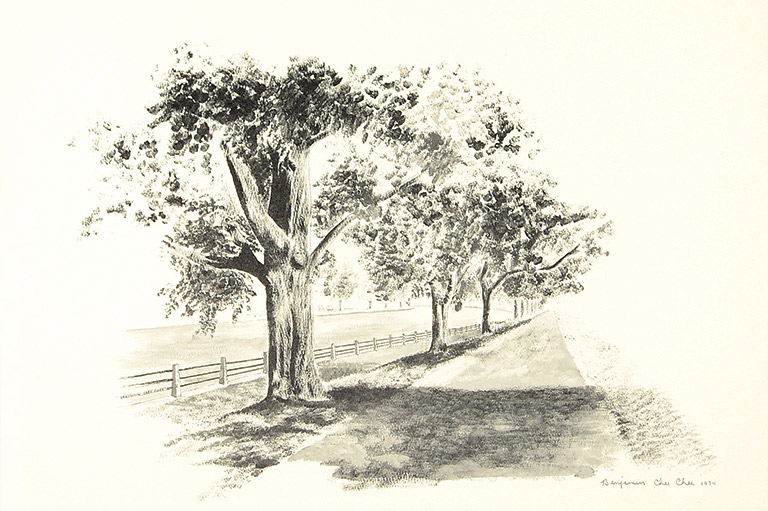
DIAND had created the Central Marketing Service (CMS), later the Canadian Indian Marketing Service (CIMS), to assist and to promote Indigenous artists and craftspeople, regardless of status. CMS collected works from aspiring artists across Canada and acted as a wholesale supplier to galleries in Canada, the United States, and Europe. Its staff provided mentoring, training, and promotional services. Benjamin was introduced to CMS by fellow artist John Dockstader and soon became a regular visitor and a rising star among its artists and artisans.
On August 31, 1974, he was featured in the Ottawa Journal in a full-page profile that included a large photograph of the artist at work. “When I draw fish or birds or animals they have no symbolic meaning from the past. For me they are animals of the present and I draw them because I like their clean lines and beautiful shapes,” Benjamin told the newspaper. The article said he was working on a portfolio of stamp designs that he wanted to send to Canada Post so that everyone who got a letter with his bird stamps on it could say, “I am collecting the art of Benjamin Chee Chee.” Nothing came of the effort.
The November 1974 issue of Canadian Indian Artcrafts profiled Benjamin, saying his work was “reminiscent of Paul Klee.” It also reported that Dr. Ted Brasser had purchased several of his works for the permanent collection of what was then called the National Museum of Man.
Benjamin continued to develop his iconic birds, which would ultimately bring him the recognition he sought, and closed out the year with a commission for a non-denominational greeting card that featured three geese marvelling at a star. The National Indian Brotherhood commissioned a series of original paintings that were used to illustrate its entire 1975 calendar. Throughout this period, Benjamin experimented with his style and subject matter.
He opened the year 1975 with another exhibition at the Nicholas Art Gallery. It included thirty new works featuring moose, geese, and seals plus some abstracts. W.Q. Ketchum of the Ottawa Journal praised the show, noting, “he has a fine color sense and his work has an admirable economy of line.” The review in the Citizen was less kind. Although reviewer Kathleen Walker acknowledged that “the collection consists of free-wheeling, imaginative drawings,” she dismissed the distinctive style Benjamin had worked so hard to achieve, saying, “once you’ve seen one ... you’ve seen them all.”
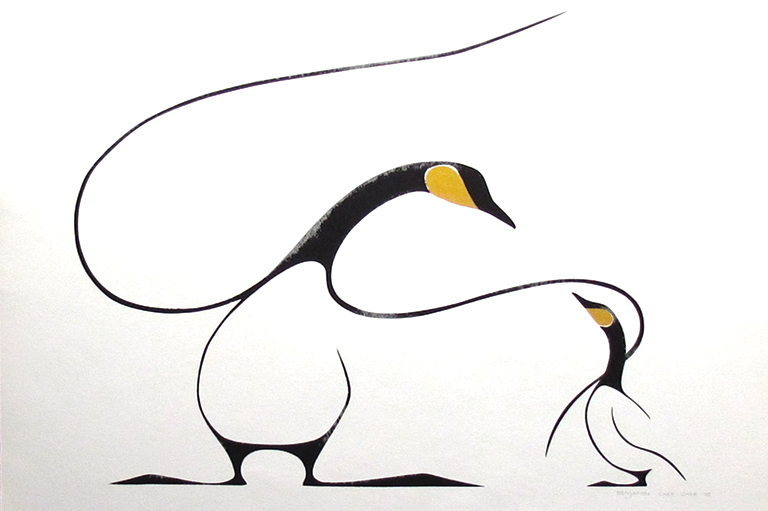
Soon after, Robert McKeown profiled Ben in a feature article in the Toronto Telegram’s Weekend magazine published on January 11, 1975. Titled “The Search of Benjamin Chee Chee — to find fame and his mother,” the piece opened by saying, “Benjamin Chee Chee isn’t famous yet but he’s positive he will be. Not arrogantly positive, just confidently positive.”
His friends cautioned Ben to exercise strong control of the marketing of his work and to continue to experiment as an artist. Eberts, one of his original champions, told me in a 1977 interview that, after his initial triumphs, Ben went through a period of laziness, “churning things out for quick sales and ignoring advice on properly marketing his work.” With the early success, he had started drinking again, she said, prompting a breakup with Lucille L’Orange.
The CIMS provided Ben with studio space, in the form of a drafting table used by its commercial artists, art supplies, and a stable work environment. The organization collected his works for future exhibitions and began to promote him. Peter Allard, who worked with CIMS at the time, met Ben in June 1975 and gave him dedicated support and mentoring. “Benjamin tended to work in spurts of enthusiasm. Nothing for a month and then a week of working night and day,” he said. “Not all of his work was accepted, and he would simply tear up the rejected pieces.”
Benjamin’s paintings were included in group shows that year in Toronto, Kingston, and Brantford, Ontario. On November 16, 1975, Governor General Jules Léger opened the newest gallery at what was then called the McMichael Canadian Collection in Kleinburg, Ontario; it was dedicated solely to Indigenous artists. Benjamin was thrilled that his work was included in the company of talents such as Norval Morrisseau, Carl Ray, and Jackson Beardy. He had now joined the ranks of those who had been represented at Expo 67.
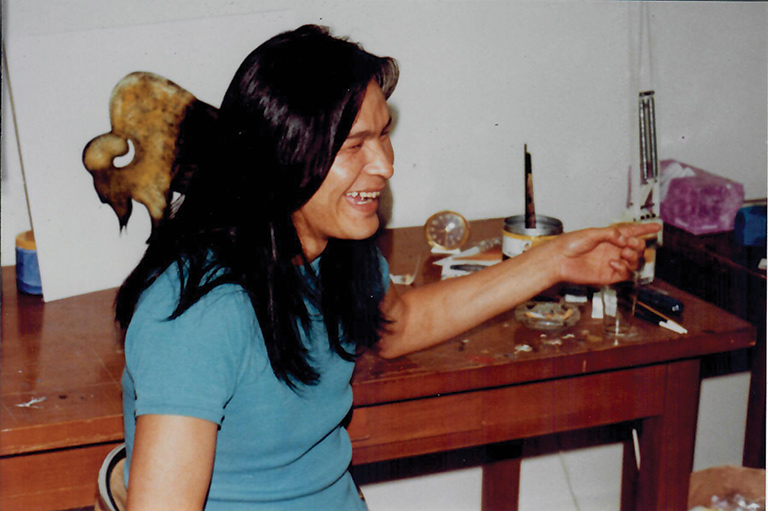
That summer, after a visit back to Bear Island, Benjamin and his old friend Hugh McKenzie moved into a bright apartment across from Jacques-Cartier Park in Hull (now part of the city of Gatineau, Quebec). Ben furnished the apartment with government surplus furniture and his few other possessions, including one cooking pot and his art supplies. He modified a wooden table by drilling several holes in it to hold his brushes.
He would subject himself to marathon painting sessions, sometimes lasting two days without a break, relying on Benzedrine pills — aptly nicknamed bennies — to stay awake.
Occasionally he would make a mistake or run out of ideas, sparking an instant of rage when he would throw his jar of paint against the wall in frustration. When the anger subsided, he knew he would have to pay for the cleanup and repainting; I once jokingly suggested that he just sign it and leave the new tenants with an original Chee Chee painting.
It was fascinating to watch him at work. Although his hands had a slight tremor, when he picked up his paintbrush they became rock-steady. Focusing on a blank sheet of paper, he would create the wing of a bird in one continuous fluid motion. Without measuring or sketching in advance, he instinctively knew where to begin and to end the brush stroke, how much paint he needed, and when to turn the brush.
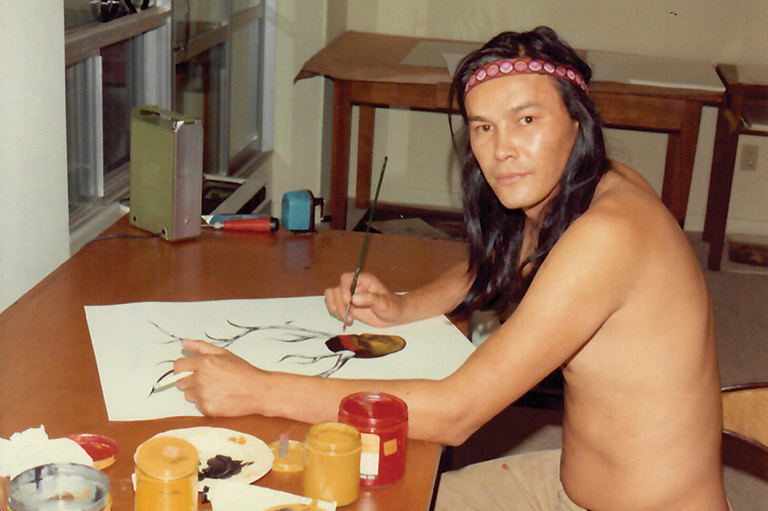
That apartment was the base for many misadventures that demonstrated Ben’s disregard for his own well-being. The Café Versailles was just down the street, and he was on good terms with the management. One day he had an argument with his girlfriend and stormed out of the restaurant, kicking the door open and, in the process, breaking the glass. He immediately went back to the manager and put the cost, some four hundred dollars, on his tab. He then said to the manager, “That’s my door now, right?” When the manager agreed, Ben went to his apartment, came back with a hatchet, and proceeded to chop the rest of the glass out of the door.
Once Benjamin decided to swim home from Gatineau, forgetting about the powerful current in the Ottawa River. He eventually came ashore well downstream, minus his shirt and boots, later saying he had floated on his back and enjoyed looking at the stars.
That Christmas, Ben and Hugh realized that they didn’t have a tree, so they took the fully decorated tree from their building’s lobby and dragged it up to the fifteenth floor, leaving a trail of needles and broken ornaments right to their door. It wasn’t long before the angry superintendent came knocking. In a panic they threw the tree off the balcony, and it landed on a parked car fifteen floors below. Ben paid for all the damages, and I helped him to move shortly afterwards.
As reflected by his art, with its minimalist lines, Ben seemed to operate with little need for possessions. When he moved he simply took his art supplies and his clothes and left all his furniture behind. He gave me his paint-spattered table, of which I have made great use over the last forty years.
Ben had no use for address books, ledgers, or detailed written records; he was blessed with a phenomenal memory and honoured his debts.
On Friday afternoon he would visit CIMS, sell his week’s production, and then make the rounds to pay off his accounts before hitting the bars. By Sunday, flat broke and hungry, he’d call friends for help.
Often, after one of these weekends, I would meet him at a restaurant or grocery store and buy him food. I tried to advise him to put some money aside for a rainy day, but he scoffed, “Money is just paper. I can draw something on this napkin and sell it — that’s my money.” He lived for the day and never seemed to worry about tomorrow, although he did once ask me how he could be a straight-living guy like me. I think we both realized that, with his artistic temperament, he was a long way from a life in the suburbs.
Ben’s devil-may-care attitude often got him into jams. On one occasion he even found himself married. The marriage only lasted a few months, and none of his friends or agents were aware of it until after his death. Occasionally he would ask friends to hold money for him. Charlie Smith, a buddy from the Gilmour Hotel, recalled, “Once I was holding $160 for him when he called from the Val Tétreault jail in Hull saying he needed $100 for bail. Then he went around telling everyone that I had saved his life.”
Ben was respectful of the law when he was thinking clearly, although he did have a police record dating back to 1961, mostly for alcohol-related offences. Once he arrived at my office with two black eyes and a bent nose. I asked him what happened, and he said it was the cops. I asked if he wanted to do anything about it, and he said, with pride, “No, I deserved it. But it took four of them.” He accepted that his actions had consequences.
One summer day in 1975 he “borrowed” a car on Bank Street, unconcerned that he had no licence or insurance, and side-swiped another car. I found him a lawyer, Eric Williams, and Ben made good all the damages and fines; he received a suspended sentence for his crime. He insisted on hand-delivering payments to people for the damages to their cars, along with an apology.
Williams was impressed with Ben’s integrity and genuine remorse after causing trouble to other people. He felt Ben’s risk-taking would eventually catch up with him but observed that Ben was determined to live life to the fullest: “He packed sixty years of living into his thirty-two-year life.”
On a later visit, I saw a very nice Chee Chee painting in Williams’ office. Ben would often give his paintings away to people who had helped him, whether they were officers of the court, taxi drivers, police officers, or waitresses.
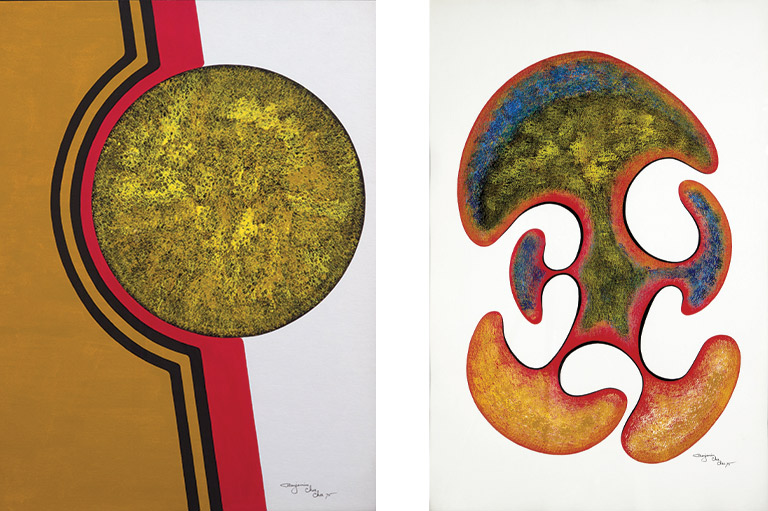
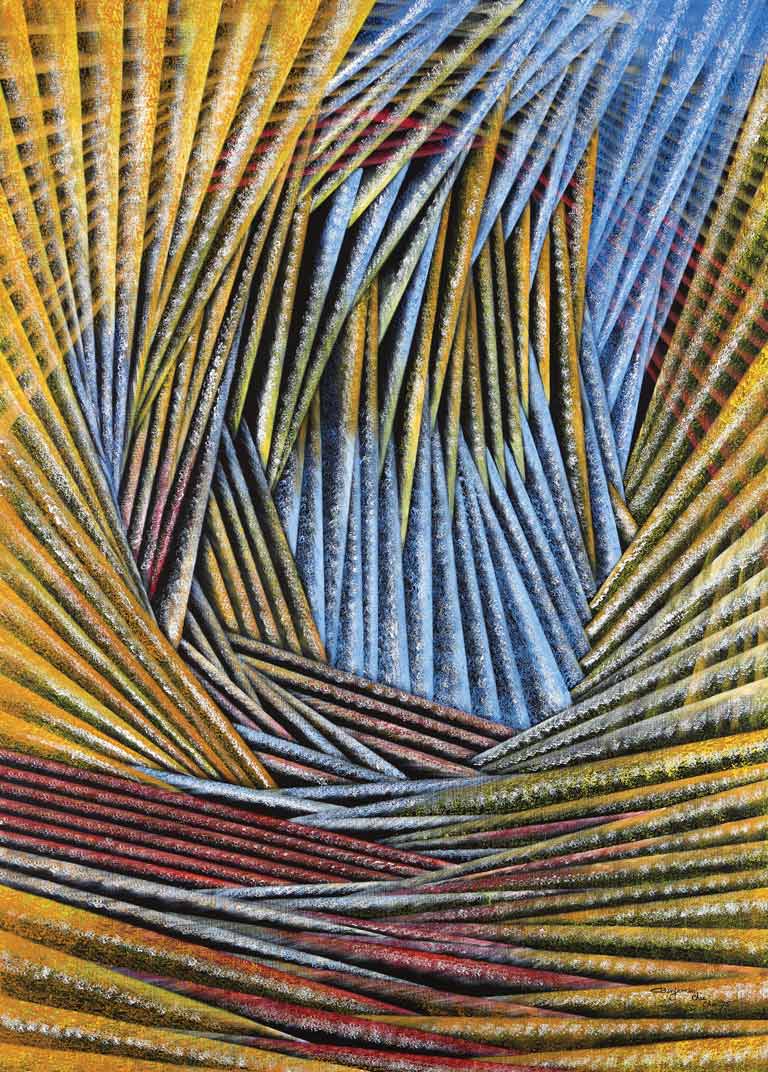
In January 1976, James Purdie of the Globe and Mail reviewed a solo exhibition of Benjamin’s work at the Evans Gallery in Toronto. He supported Ben’s rejection of the “Indian artist” label, saying that attitude was “important, too, to the whole art movement now flourishing but lacking diversity among the Ojibway.” Benjamin did not subscribe to the Woodland style founded by Norval Morrisseau; instead he preferred to develop his own unique approach.
The rest of 1976 saw a constant flurry of activity, including exhibitions in Waterloo and in Halifax as well as the releases of a new edition of six silkscreen prints featuring animals and birds and of boxed Christmas cards featuring Ben’s stylized caribou.
The highlight of 1976 was undoubtedly Ben’s reunion with his mother. Peter Allard of CIMS had heard that she was in northern Quebec. He located her working at a tourist camp in Notre-Dame-du-Nord, near the Ontario-Quebec border. Ben immediately set out to find her, chartering a plane for the last leg. “It was June 27, and I was swimming with my nieces at the camp when a plane arrived and landed on the water,” she told me in a 1977 interview. “Ben jumped out and ran into the water to give me a hug.” Josephine returned to Ottawa with him.
Ben spent Christmas at Bear Island with his friend Hugh McKenzie and came back to Ottawa on January 4, 1977. He was so anxious to get home that he called me collect from North Bay and asked me to send him money so he could take a taxi. I managed to persuade him to take the bus.
He invited me to his room at the Alexandra Hotel and with great excitement unwrapped his latest prototype drawings for a new edition of silkscreen prints that he called the family series. He had completed them at Bear Island and brought them with him as he rode on the back of a Ski-Doo to Temagami. The prints featured images of two mature geese with a gosling. “Me, and my Mom, and my Pop,” Ben said with glee. His favourite was a picture of the three of them flying high. Ben often said that after he died he wanted to come back as a bird so he could soar through the heavens forever.
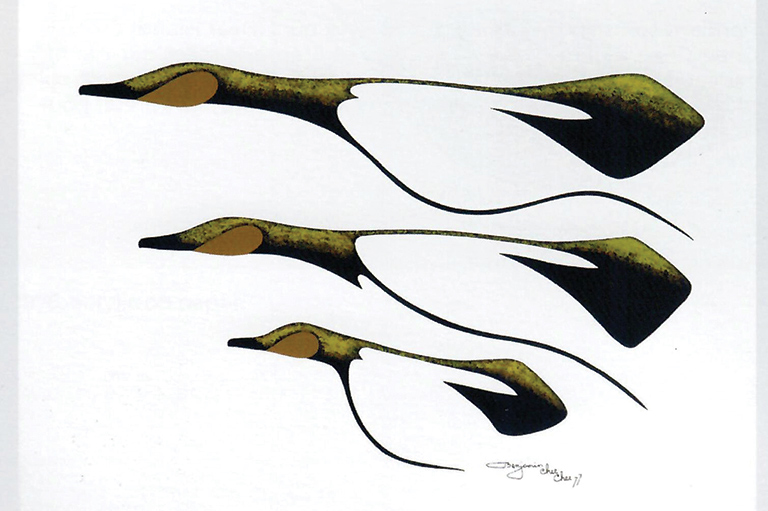
Ben often said that after he died he wanted to come back as a bird so he could soar through the heavens forever.
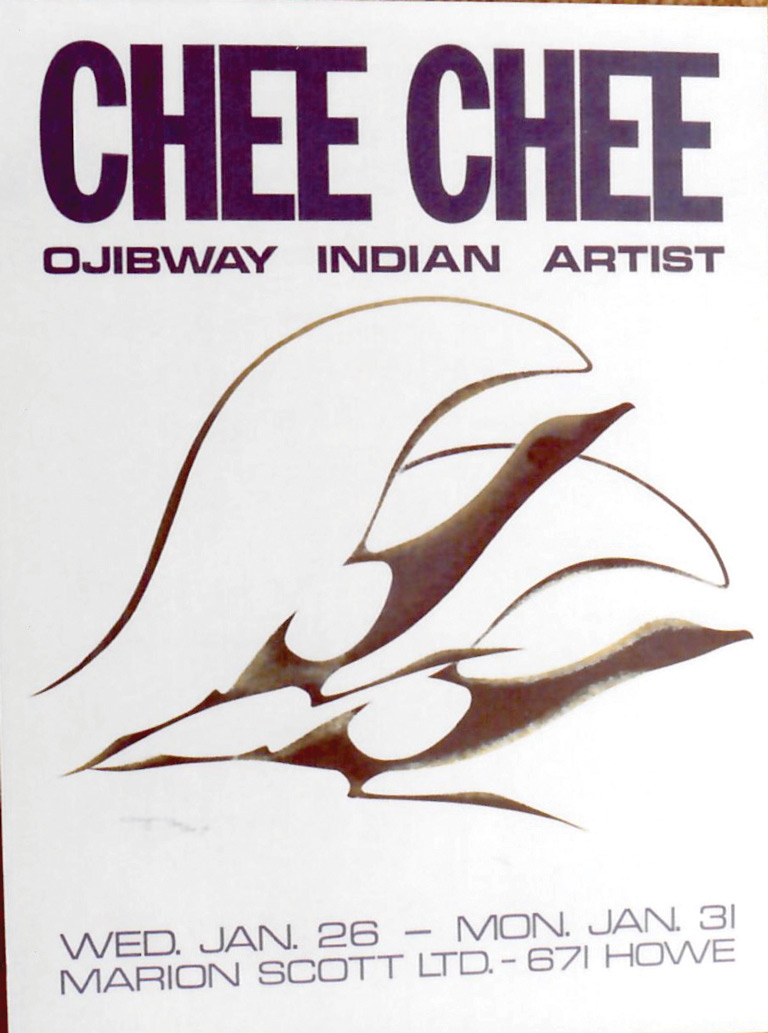
His prospects for 1977 suggested that it would be the best year of his life. Publishing house Clarke, Irwin & Company featured Benjamin’s soon-to-be-famous Dancing Goose as the January illustration on its annual “Indian Art” calendar. He was scheduled to attend a solo exhibition of his work at the Wildlife Gallery in Toronto on January 8 and another at the Wah-sa Gallery in Winnipeg in February. He was most excited about another solo exhibition at the Marion Scott Gallery in Vancouver at the end of January. His good friend Fred Brown, who now lived in Victoria, would be there, and afterward Ben would be able to boast of having had one-man shows from coast to coast. He even attended an Alcoholics Anonymous meeting with his mother, but he was not ready to commit. His paintings were now selling for five hundred to a thousand dollars apiece, a far cry from the twenty or thirty dollars he’d been getting just five years earlier.
Benjamin spent three weeks in Victoria, where he had many heart-to-heart talks about his life with his friend. Brown mostly listened. “All of the dark and dreadful caverns of his mind were explored, all his terrors and fears were expressed; he knew the ultimate result of his addiction — the loss of his great talent,” Brown recalled. “Yet he had hope and determination: After moving permanently to Victoria at the end of March, he intended to do something about that addiction, and I know he was serious, for he was a determined man.” But, while in Victoria, Benjamin continued his partying ways and spent a night in a local police cell.
He sent me a cheery postcard: “Exhibition is a roaring success. No snow out here. Say hi to your family. Benjie.” All forty-five paintings in the exhibition sold on the first day, some for as much as $1,200, and he was asked to produce several new works while he was there.
Ben had decided to relocate to Victoria with his mother, but he wanted to have one final show in Ottawa to coincide with his thirty-third birthday on March 26, 1977. All through February and early March, Benjamin could not contain his excitement for the upcoming show.
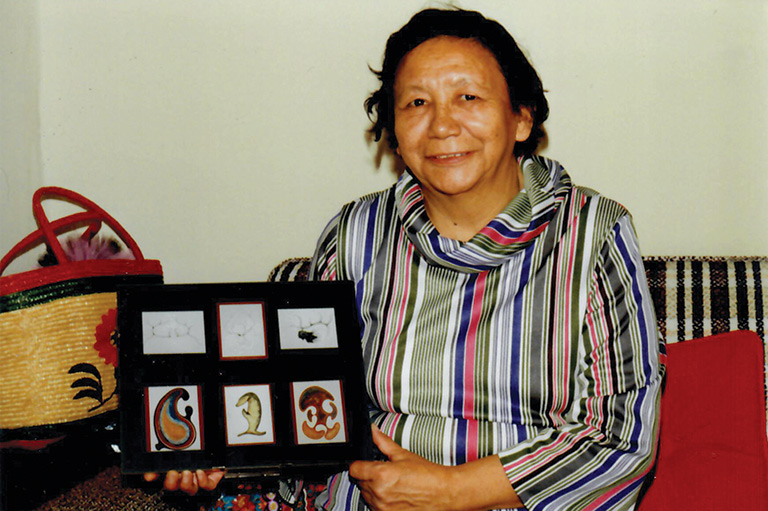
The morning of March 11, 1977, started with so much promise. He walked his mother to the bus station — she was going to attend an AA conference in Toronto — and then had lunch with a friend at his favourite restaurant. After lunch he delivered his newest paintings to CIMS, and then ran into Tom Hill on the street. “He planned to do a series of paintings or drawings about the finding of his mother. It was just another day in Chee Chee’s life,” Hill said.
Filled with promise and good humour, Ben returned to the restaurant for some celebratory refreshments with another friend, Charlie Smith.
The staff began to dim the lights and drew the curtains for the evening dinner crowd, but Ben still wanted to party. He insisted on opening the curtains and whooping it up. The management asked him to go home, even offering to call him a taxi. When they finally escorted him outside, Ben struggled to get back into the restaurant and, in the ensuing scuffle, broke the door. Smith tried to take him home, but he wouldn’t leave.
Smith later said of Ben that “when he was drinking there seemed to be a persecution complex…. He would be mean, and vulgar, and sometimes violent. But even at those times you couldn’t help but like the man. To know Ben Chee Chee was to accept him when he was drunk.”
The police were called and tried unsuccessfully to persuade Ben to go home. He was arrested, booked for drunkenness at 6:45 p.m., and placed in a cell at 6:50. Cell No. 10 is a bare cage, devoid of furniture and reserved for uncooperative prisoners.
Brown later wrote a scathing letter to the Citizen condemning the treatment Ben had received on his arrest. “Had he been a senator, cabinet minister, a prominent businessman (and I am sure some of those august groups suffer from a similar affliction) he might have been driven home.”
In the few minutes it took for Ben to make the decision to end it all, what went through his mind? The degradation of being thrown in a cage when he had been flying so high just an hour earlier? Did he dwell on the fact that he had humiliated himself at the restaurant where he had gained respect and friendships? Benjamin had in the past said he wanted to be a role model for his people. Did he feel like he had let them down?
Such thoughts may have been the final straws when added to the burdens he was already carrying. The tremendous demand for his work by galleries and collectors, his attempts to maintain his artistic integrity, his desire to achieve stability in his lifestyle, and his apparent failure to cope with his personal problems likely all combined to cause him to take that last tragic step. And did the abuse he suffered at St. Joseph’s Training School set him on this destructive path?
The late Dr. Alvin L. Evans, former professor emeritus at Wilfrid Laurier University, studied and lectured on the suicide epidemic among Indigenous people in Canada. In a letter about Ben’s death that he wrote to me in March 1979, Evans said “there seemed to be some obvious motivations, such as, his arrest and alcoholism. I think, however, there are some deep cultural problems which have developed over the several hundred years in which the North American Indian has been exposed to white man’s culture. The Indians’ loss of identity, of language, of traditions, of religion, of the sense of worth and value, of self-respect, no doubt have contributed to Benjamin’s death, as well as the suicides of increasing numbers of young Indian men and women.” Evans published a book about his research in 2004, entitled Chee Chee: A Study of Aboriginal Suicide.
Ben watched silently from the back of the cell as an officer made the rounds at seven o’clock. Approximately six minutes later, the cellblock officer returned, escorting another prisoner, and found that Ben had used his shirt in an attempt to hang himself. The officer cut him down, but the damage had been done. Ben was taken to the Ottawa General Hospital and kept on life support until his death on March 14, 1977. The Ottawa Citizen ran a story with the headline, “He seemed bent on self-destruction.”
When I inquired later about how the costs of Ben’s funeral had been paid, Gary Lafontaine of the Odawa Native Friendship Centre advised me that DIAND could not provide funding because Ben was non-status; it was one final rejection.
In a news release to other Indigenous organizations, the friendship centre announced, “Within our community, a Native person has passed away. His name was Benjamin Chee Chee — and with him, he took the talents of a great Indian artist. We will remember him through the work he left behind.” The centre arranged for a traditional Ojibwa funeral, with a wake at its downtown premises, where almost one hundred people signed the memorial record. “All costs were covered by donations,” said Lafontaine.
A service was held at St. Theresa Roman Catholic Church on March 18, and, according to his mother’s wishes, he was buried at Notre Dame Cemetery in Ottawa’s east end. His friend and fellow artist John Dockstader designed a tombstone featuring Bennie birds, but there was not enough money to complete it.
On June 9, 1977, about a dozen members of the public attended an inquest — which is mandatory when there is a death in custody. Thirteen witnesses, including the police officers who were involved, the ambulance attendant, doctors, the coroner, and Pierre Gaignery all testified about the grim sequence of events that led to Benjamin’s death. The younger police officers seemed somewhat sympathetic, stating that Ben was not violent and that he was being charged with drunkenness because he was “boisterous, intoxicated, and staggering.” The older officers emphasized his history of violence involving police. His two-page rap sheet, which dated back to 1961, included his first arrest at Bear Island for the Hudson’s Bay store break-in, charges for drunkenness and fighting in Northern Ontario, six alcohol-related incarcerations at the Bordeaux jail in Montreal, some visits to Hull jail, and three incidents in Ottawa, including the infamous car theft and charges for assaulting police officers and resisting arrest.
Cellblock officers testified that they did not think he was seriously injured as they detected “a weak pulse and seemingly shallow breathing.” The cellblock was not equipped with resuscitation equipment, and no attempt was made to revive him before the ambulance arrived at 7:15 p.m. Dr. Phyllis Hierlihy of the Ottawa General Hospital testified that his death was the result of a prolonged lack of oxygen that caused severe brain damage. She also testified that his blood alcohol level was elevated to the point where it would have caused profound intoxication, and that no drugs were found in his system.
The coroner’s jury made three recommendations: “that cell block officers be qualified to administer artificial respiration with appropriate equipment; that mandatory and frequent rounds of the cell block be carried out; and that a better system of monitoring the cell block from the officer’s desk be installed.” Perhaps, in death, Benjamin saved other lives.
The day after the inquest, special sales that had been organized by the CIMS opened in four galleries across Canada: Nicholas in Ottawa, Inukshuk in Waterloo, Marion Scott in Vancouver, and the Wah-sa Gallery in Winnipeg. As happens after many artists’ deaths, the demand for Benjamin’s work escalated along with prices.
Wah-sa Gallery had originally planned to host a solo exhibition of his art in February 1977. “Chee Chee’s death was the first we experienced in artists we represented — tragic,” Wah-sa’s Gary Scherbain said in a recent interview. He said Benjamin inspired many Indigenous artists who followed him. “His lineal style led to a number of other Indigenous artists patterning his style into their approach — Clemence Wescoupe, Doris Cyrette, Isaac Bignell, Hugh McKenzie, and Sweetpea [Leo Neilson].”
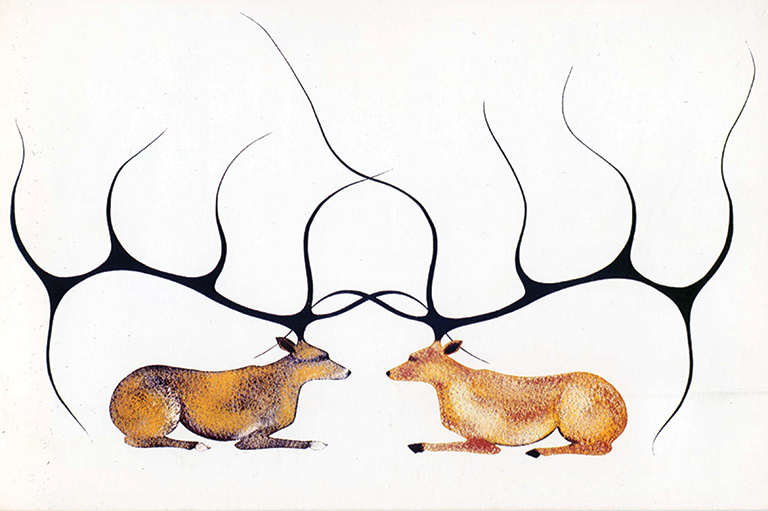
In November 1978 the CIMS released the family series of limited-edition silkscreen prints from the originals Ben had completed at Bear Island around Christmas 1976. They were well received by the public. The Chee Chee estate benefitted from the sale of the prints as well as from several commercial ventures that promoted and sold images created by Benjamin, making Dancing Goose and Friends some of the best-known and most easily recognizable images in Canadian art.
The nominations committee of the Royal Canadian Academy of Arts had contacted Bob Gervais, CEO of Canadian Indian Marketing Services, about Benjamin in 1976. Rebecca Sisler, the academy’s executive director, advised me in a letter from March 1979 that “it was felt by the Committee that Benjamin was a young artist, still developing, and that national, professional recognition was a little premature. Doubtless, had he lived, he would have become a member of the Academy.”
In 1979, I contacted Ottawa Mayor Marion Dewar and suggested that the city consider buying a 1974 Chee Chee original painting of Rideau Falls with the city hall in the background. She responded favourably, and a reception was held on May 24, 1979, when she and Ben’s mother, Josephine Roy, unveiled the painting that would hang on the main floor of city hall. More than three hundred people attended the reception.
Benjamin lay in a grave with no headstone for twenty years, its only marker a small stick decorated with colourful ribbons and a miniature beaded headdress that a young Indigenous girl, Kelly Attigiak, had placed on the grave. Carl Crozier, an Indigenous man who lived nearby, brought the state of Ben’s grave to the attention of the Ottawa Native Concerns Committee (ONCC), a volunteer advocacy group. ONCC president Alex Akiwenzie mobilized local Indigenous artists, including Simon Brascoupé, Barry Ace, and Albert Dumont, members of the Odawa Friendship Centre, and many of Benjamin’s friends. Together they created the Benjamin Chee Chee Memorial Fund. Brascoupé produced a new print called Dancing Goose, which was raffled off in one of many fundraising efforts. Ottawa Sun reporter Ron Corbett wrote several stories, and radio personalities Lowell Green and Steve Madely took to the airwaves to publicize the cause. Local citizens and businesses — including Martel and Sons Monuments, which donated the gravestone — got on board, and DIAND provided a substantial grant. Enough donations were raised to finally erect a fitting tombstone on June 27, 1997.
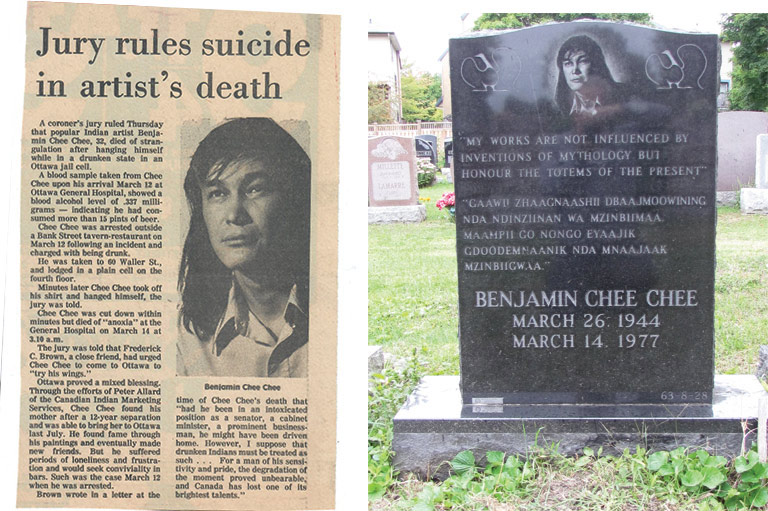
Ceremonies lasted from dawn until dusk. A fire was started at a sunrise ceremony, and maintained by keeper Richard Yellow Quill until the day’s events were completed. Benjamin’s mother unveiled the tombstone, which was inscribed with his likeness, his iconic dancing goose, and a quotation from the artist himself, in both English and Ojibwa: “My works are not influenced by inventions of mythology but honour the totems of the present.”
Hugh McKenzie and many of Ben’s friends from Bear Island, including Chief Jim Twain, band elders, and local drummers, participated in the events. The mayors of Ottawa and neighbouring Vanier, Ontario, declared June 27, 1997, Benjamin Chee Chee Day in their respective cities, and both attended the graveside services. A community feast followed, and the first plate filled was for Chee Chee himself, “to feed his spirit,” as Albert Dumont said. Kelly Attigiak, by then ten years old, was introduced to the assembled crowd as the one who had sparked the drive to mark the grave.
“Respect at last” blared the headline of the Ottawa Sun the next day. It was long-overdue but also well-deserved, lasting respect. Temagami First Nation Chief James Twain spoke to the graveside gathering of about one hundred people, saying, “I want people to recognize him as an artist … but also as a human being who suffered as many of our members do.”
Ben once expressed his philosophy of life in a CBC Radio interview: “The whole world is mine if I want it. God gave you a life, and it’s up to you to do the best with it. I got lots of problems, but I think I can handle it. If I made it this far, I think I can make it the rest of the way.”
The week before he died he came to my office three times. I could see that he was anxious. He talked about his conquests, new and old, and expressed concern that his mother was not keen to move permanently to British Columbia. He bought and sent a humorous card to Fred Brown and chuckled when I found two six-cent Christmas stamps in my briefcase for him to use. He was going to work in Ottawa for a month or so to settle his debts and to get a stake so that he could pay rent in Vancouver and take a well-deserved holiday. I was leaving for a field trip to the Yukon the following week, and we arranged to have dinner on my return.
The last thing he said to me was, “You’re a good friend to me, Ernie.” Those words haunt me still.
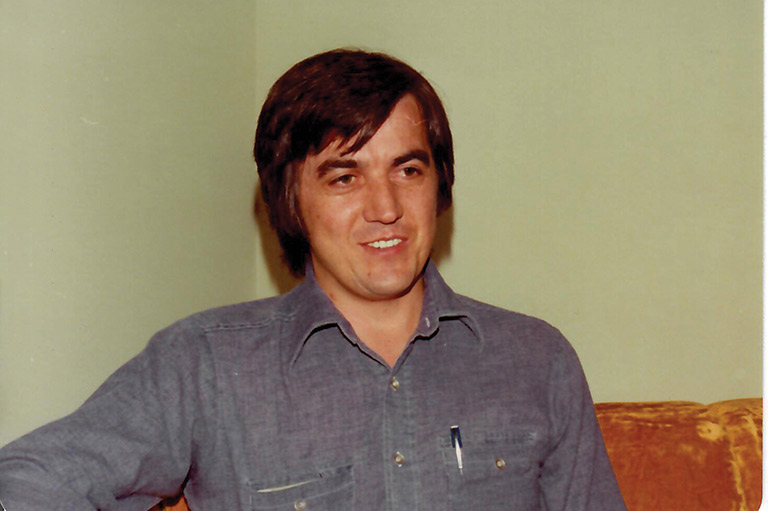
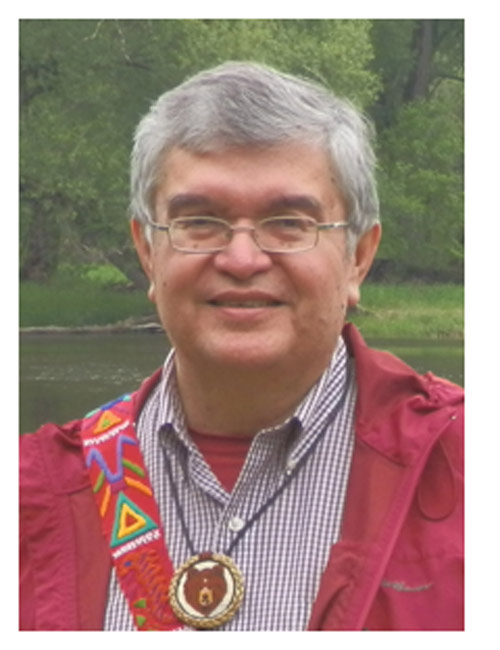
Promise Unfulfilled
Simon Brascoupé, a prominent Algonquin artist, worked at the federal government’s Central Marketing Service in the 1970s. In Benjamin Chee Chee’s art, Brascoupé saw echoes of traditional stencil designs used by generations of First Nations craftspeople in creating images of animals, birds, and plants on birchbark.
He also saw loss. “He was very quiet. I think he missed his family. I felt that he was always searching for something.”
Chee Chee’s separation from his family and his time at reform school shaped him. “I don’t think you get over it. His life experience reflects the life experience of many Indigenous people in Canada,” Brascoupé said. “He was another tragedy in our community.”
Chee Chee was “just starting to establish himself. He was experimenting with pushing the boundaries of his art,” Brascoupé said. He can picture another path for Benjamin Chee Chee — one in which he is both a well-known artist and a beacon for others who struggle. “Some artists start out from a difficult early life, and, as they mature, they are able to get out of their addictions,” Brascoupé said. “He wrestled with finding himself, with who he was as an Indigenous person,” experiences he could have shared with others facing the same questions.
Brascoupé knows many Indigenous people who survived residential school or who were adopted away from their home communities during the Sixties Scoop but who have been able to focus on giving back to their community and to supporting others. Like so many who knew Benjamin Chee Chee, he wondered what was going through the artist’s mind before he killed himself. “People weren’t talking about these things back then. Maybe if they were, that would have helped.”
— Nancy Payne
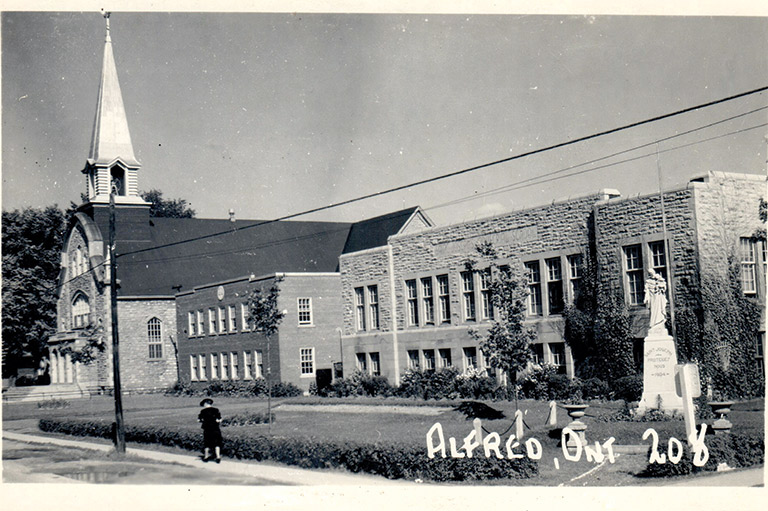
At Canada’s History, we highlight our nation’s past by telling stories that illuminate the people, places, and events that unite us as Canadians, while understanding that diverse past experiences can shape multiple perceptions of our history.
Canada’s History is a registered charity. Generous contributions from readers like you help us explore and celebrate Canada’s diverse stories and make them accessible to all through our free online content.
Please donate to Canada’s History today. Thank you!

